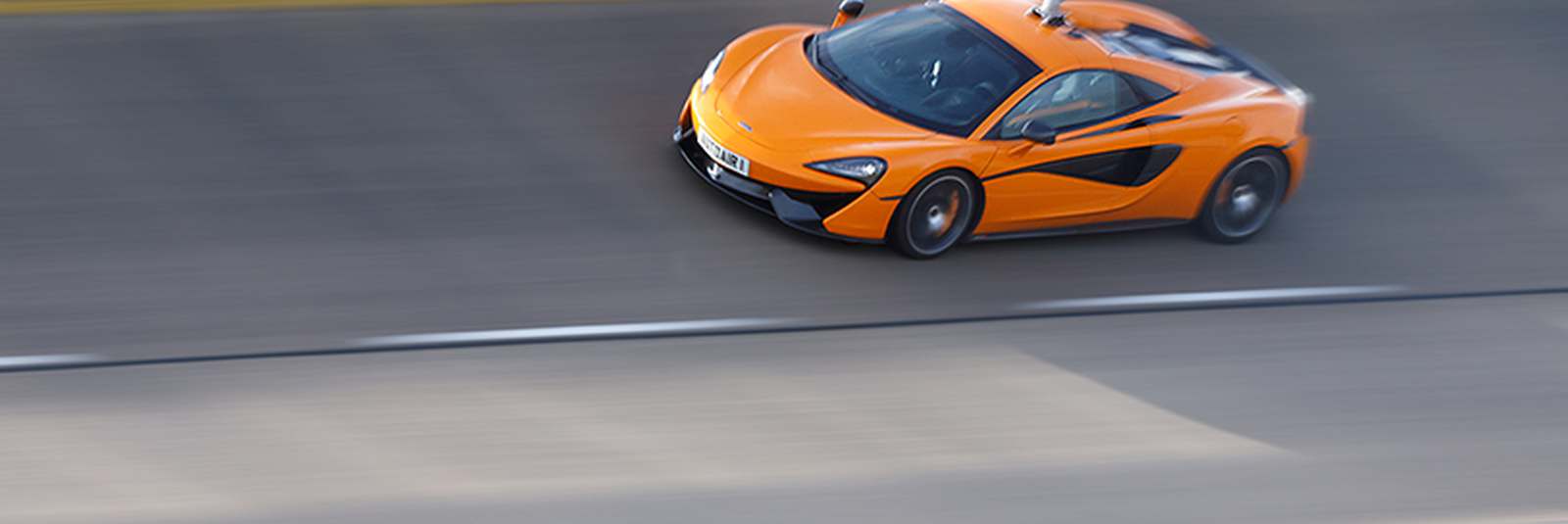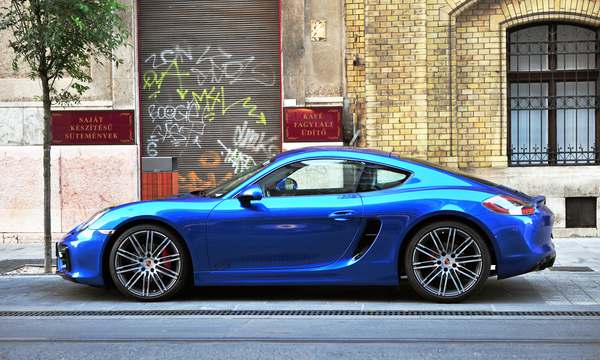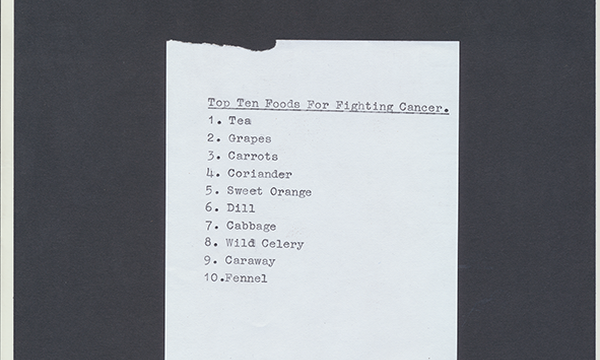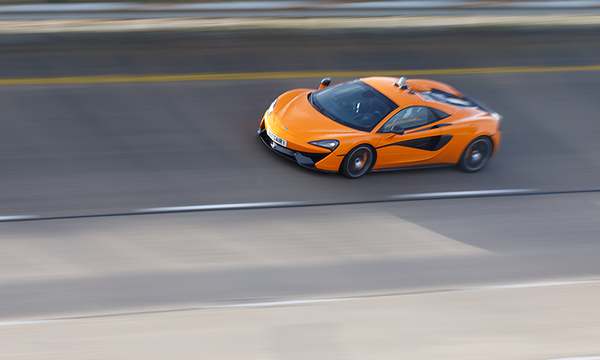
High Speed Mobiles
This article is from the CW Journal archive.
You might think that a download speed of 1Gbps while travelling at 160mph is impressive but it’s something that’s done regularly at the Millbrook Proving Ground in Bedfordshire as a McLaren laps a 3.2km bowl. It’s even more impressive when you learn that the 5G coverage consists of 22 hyper-small cells which means the lapping car is being handed over every two or three seconds and, because it’s using two cells for much of the time, sees a burst rate of 3 Gbps.
This is the AutoAir project. The work being done is essential in the development of connected and autonomous vehicles. Future systems will be able to ‘see’ through the traffic ahead, for example, and self-driving cars will know if there’s an accident just around the next blind bend.
Millbrook Proving Ground is where motor manufacturers go to test their prototype cars and is the site where one of six government-funded 5G projects is based, as detailed in issue three of CW Journal. Apart from the high-speed bowl, the proving ground houses car-handling circuits, different pavement finishes from all over the world, a skid pan, a mile-long straight for speed tests, and a fabulous test road known as the Hill Route
The CEO of Millbrook Alex Burns sees digital technologies as an important part of the site’s future. A new test centre specifically for connected and autonomous vehicles is being built – but AutoAir isn’t waiting for that. Burns is pressing ahead in applying the current principles of automotive development work to telecoms.
The focus for most of the car test teams is on safety and security. Moving to driverless cars should make the country’s roads safer and having more data on upcoming hazards will help both traditional and driverless cars. Knowing there’s an accident ahead lets cars and drivers see into the distance but data has to be handled sensitively because not every driver sticks to 69mph on the motorway and wouldn’t be too happy if all the telemetry information was made public.
WORLD LEADING TECHNOLOGY
Marlon Persaud, Airspan’s Chief Architect, explains that the AutoAir project uses TDD, at 2.3GHz and 3.4 GHz to 3.7 GHz. The mobile base stations his team have designed and built in the UK are based on the Intel Xeon AVX-512 vector processor. With 16 x 16 MIMO, and beam steering to provide multi-gigabit connections. While still prototype devices they are being built and depolyed in significant numbers.
Marlon Persaud, Airspan’s Chief Architect, explains that the AutoAir project uses TDD, at 2.3GHz and 3.4 GHz to 3.7 GHz. The mobile base stations his team have designed and built in the UK are based on the Intel Xeon AVX-512 vector processor. With 16 x 16 MIMO, and beam steering to provide multi-gigabit connections. While still prototype devices they are being built and depolyed in significant numbers.
CW member Real Wireless did some market analysis for the National Infrastructure Commission and reached the conclusion that one of the most important areas for improving communication was on transport routes, both rail and road. It also noted that drivers and cars will expect to be connected all the time and many driver aids will require it – such as Volvo’s warning system about black ice.
Rahim Tafazolli, professor of mobile and satellite communications at the University of Surrey, is closely involved with the project and says, “We are only at the beginning of 5G”, enhanced mobile broadband is only the beginning. He describes 5G as “a special generation” that should not be compared with 4G, it’s not just faster than 4G, 5G is a fabric of connectivity with flexibility, capacity, and low latency. The economic benefit will be substantial by 2030, with 5G giving a national GDP increase of more than one per cent from improved mobile broadband, and over four per cent from improved automation.
The AutoAir network is built on the 5G core developed at the University of Surrey which Tafazolli claims is four years ahead of other 5G core ventures. His department’s development projects will help the UK diversify and be less reliant on being a service economy, he claims.
Both the University of Surrey and the AutoAir project have benefited from Department for Digital Culture Media and Sport (DCMS) funding. In all up to £200m will be provided by the DCMS for projects right across the country, with the aim of gaining 5G leadership and accelerating adoption. Combined with industry funding, this has produced six Phase 1 test beds including the one in Millbrook.
The AutoAir work can also be aimed at improving rail connectivity. While Network Rail has a number of yellow test trains – including a radio test train – it’s very hard to have long periods of exclusive use of train tracks for testing. Fortunately, either a car or coach lapping the road track at train velocities is a good way of testing technology that can be rolled out on the railway system later.
Ian Smith, the DCMS 5G testbeds and trials programme director, sees the various projects as the key to creating new use cases looking at what can be done with faster connectivity and lower latency. Lessons have been learnt on spectrum availability and the use cases are starting to build, but most of all he values what the participants have learnt from the benefits of collaboration. Throughout there are more than 50 partner companies deployed on the six projects all working in parallel. UK5G - the national 5G Innovation Network -
is also, of course, supported by the DCMS, and is working to promote all these projects, enhance further technology cooperation and partnerships, and, most of all, to stimulate industry demand and take up.
The AutoAir consortium is led by Airspan, with support from the University of Surrey 5G Innovation Centre, Arm, Blu Wireless, Dense Air, Millbrook, Quortus, Celestica, Real Wireless and McLaren Applied Technologies. The UK mobile network provider O2 isn’t yet a consortium member but has provided use of its spectrum and sees the strength of the collaboration as a major attraction for working with the companies.
There are no plans for the new McLaren Speedtail to be the first production car to use a 5G mobile system. McLaren Applied Technologies is a separate division that takes technologies developed by McLaren Automotive and sells it into the other industries. That doesn’t stop Autoair from having the use of a £120,000 McLaren 540 as a test car but the test team also uses a high-power Mercedes E63 AMG estate car, a BMW i3 hybrid electric city car and a passenger coach – all equipped with 5G test kits. Every seat on the coach has a screen to allow the engineers to see network diagnostics and views from the other vehicles.
The whole fleet is tracked with 16 by 16 mini-massive MIMO (multiple input, multiple output) and beamforming. One area of research the consortium is learning about is how to work with the Doppler effect because the McLaren laps at three times the speed of the coach. Unfortunately, I was only allowed in the coach (I did ask!).
|
GET CW JOURNAL ARTICLES STRAIGHT TO YOUR INBOX Subscribe now |
The Millbrook Proving Ground bowl is the site of many tales of motoring journalists’ derring-do – including one of a Lamborghini Countach going over the top of the bowl – but the tale with the most traction is that of the very first ever driverless car.
The banking of the bowl is designed so that, at certain speeds, a correctly set-up car will track straight ahead; the banking balances the curve or the road. In the top lane the recommended speed is 100mph. Many years ago, a couple of journalists testing a Rolls-Royce experimented with the then new technology of cruise control.
They found that by setting the speed just right and allowing for the instruments over-reading they could indeed drive hands-free. Then they got adventurous, removed the headrests and climbed into the back to read a newspaper. This worked well enough until the cruise control inexplicably clicked off, which facilitated a panicked leap back into the front seats as the car drifted down the lanes and towards the centre of the circuit.
So, while driverless cars seem like a new direction for Millbrook, it’s something that was first done there decades ago.
Peter Claydon from AutoAir explains the diagnostic information available in the coach as it circulates around the test bowl, lapped by the McLaren, BMW and Mercedes.
Ofcom supports all the 5G projects and has taken on board the criticism about spectrum availability. Ofcom CTO Mansoor Hanif points to the regulators report on wireless innovation (OFCOM: Supporting the expanding role of wireless innovation in UK industry), he’s enthralled by the sophistication of beamforming which helps with spectrum efficiency. Hanif points out there has never been so much spectrum usage with 250,000 licences, and more to come. Ofcom is consulting about shared spectrum and it proposes releasing 400MHz at 3.8GHz to 4.2GHz which it sees as suitable for rail and road use.
The AutoAir project went from concept to up-and-running in nine months, which is remarkable given the scale of the project. Millbrook is a big site but the level of coverage is very high, with 89 cells deployed over 59 locations. The spectrum used is 5G TDD at 2.3GHz and 3.4GHz to 3.7GHz, plus WiGig 57GHz to 71GHz principally used for backhaul. This is perhaps the densest 5G network in the world, wherever you stand you can see half a dozen cells.
A lot of fibre has been run around the estate and Paul Senior, CSO of Airspan and CEO of DenseAir, has learnt a lot about trench digging and mud. The site is being run as a neutral host using systems from DenseAir so that AutoAir can provide an infrastructure that other operators – be they BT, EE, Vodafone, Three or O2 – can all connect to, and experiment with. Processing has been moved from the core to give multi-access edge computing and narrow band 5G base stations (gNodeBs) as an integral part of the architecture.
The neutral host model for 5G infrastructure sharing is expected to be essential in bringing down the cost of installing a high-density, mobile network. Part of the work done by the test bed is to show how multiple networks can play nice together. It can also test the technical feasibility of improving poor mobile coverage in transport corridors with constant connectivity, low latency, and high throughput.
The new 5G base stations have been developed by Airspan, using Intel Xeon processors with AVX-512 support. They are the world’s first SDR 5G base stations, leading in open radio-access networks, and aimed at reducing the operator’s reliance on individual vendors. Part of the test network flexibility is demonstrated by the masts’ flagpole-like arrangement so that antennas can be swapped out quickly. Real Wireless radio planning has sites located around Millbrook and the infrastructure comes from Blu Wireless equipment with Quortus providing virtualised network capability. Not all base station sites can be reached by fibre, so the fibre network is supplemented with a WiGig mesh.
The idea of drivers being able to view a screen which shows what is ahead and round the next bend is described as “seeing into the future”, but that term could just as well be ascribed to the whole of the AutoAir project.
|
GET INVOLVED WITH THE CW JOURNAL & OTHER CW ACTIVITIES |
In an exclusive interview with CWJournal, Brendan O’Rielly, CTO of O2, talked about 5G coverage and its plans. The company is predicting uses for 5G and building business plans based on use cases.
O’Reilly is surprisingly bullish about the future, saying that “5G will have a bigger impact than the introduction of electricity”, adding that 5G is about outcomes: what the customer experience will be. The company met with lots of FTSE 100 companies to see what customers were looking for and is now working with around 10 of them. He says it’s not about coverage or speed but about meeting customer expectations. He also points to O2’s smart cities research which showed that 5G sensors for rail maintenance would save £400m, and road sensors for properly managed roads would save 10 per cent in journey times. He sees collaboration programmes such as AutoAir as being essential
A very similar line was reported in the last issue of CW Journal when BT’s CTO Howard Watson said he saw 5G as being a complementary technology to 4G and Wi-Fi. O’Reilly, points out that O2 has 98 per cent population coverage in the UK and meets its Ofcom obligation to cover 90 per cent of the landmass.
O’Reilly says O2 will not shy away from investment, it has spent £2bn on infrastructure over the last couple of years, but he also identified three areas in which the UK needs to concentrate its efforts in order to lead in 5G. They are: spectrum, planning permission, and fibre.
Ofcom has said it will be relaxed how the forthcoming 700MHz spectrum will be used – it could be 4G or 5G – but O’Reilly says there needs to be more spectrum available.
5G WILL HAVE A BIGGER IMPACT THAN THE INTRODUCTION OF ELECTRICITY
He feels that new rules on planning permission are crucial. He doesn’t want small cells to require any permission and says that faster processes for approval of large cells is needed. In support, he points out that the feeling in Japan and South Korea is that the three months it takes to get a cell site approved is too slow and is hampering them – in the UK it takes 36 months. Masts also need to be higher. In mainland Europe heights of 50m are typical while the UK is usually limited to 15m which has a significant impact on rural connectivity.
Improvements in the UK’s fibre network is crucial, he says. The fruits of Openreach being forced to open its ducts to other companies have yet to be seen and he’s sceptical of how this will improve things, fearing a land-grab for the ducting which will leave many companies no better off.
O’Reilly is also keen to learn more about the neutral-host model that’s being used by AutoAir. While many people see this as an inevitability for 5G, he’s less certain and wants to see how well it works in practice.
One of the hot topics at the moment is the West’s attitude to China’s Huawei.
O’Reilly says that O2 is taking a watching brief but he respects Huawei’s radio engineering where he sees its equipment as being innovative. O2 intends to continue to work with the company on the radio side of things but will wait for government instruction on this. There isn’t currently any Huawei kit in the O2 core.
Simon Rockman bridges writing about technology and implementing it. As the editor of UK5G Innovation Briefing he visits many of the 5G applications. As Chief of Staff at Telet Research he works with a team installing 5G networks in not-spots. An experienced technology writer, he was the editor of Personal Computer World in the late 1980s and went on to found What Mobile magazine which he ran for ten years, and has reviewed over 300 handsets. As the mobile correspondent for The Register, he championed CW writing a number of articles supporting the organisation. He has also had senior roles in telecoms having been the Creative Experience Director at Motorola where he looked at new uses for mobile and Head of Requirements at Sony Ericsson where we worked on innovative devices at entry level. He was the Head of the Mobile Money Information Exchange at the GSMA and has launched Fuss Free Phones an MVNO aimed at older users











